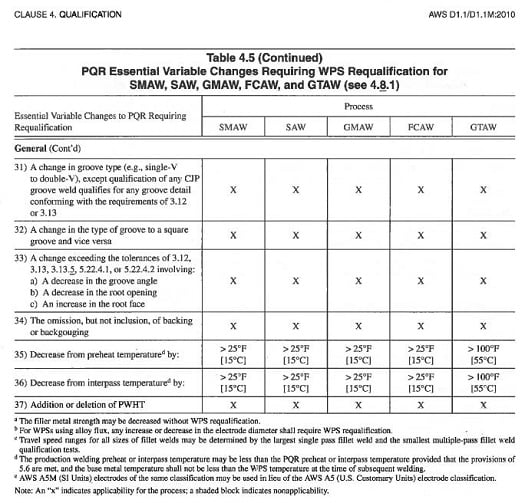This is Part 1 in Welding Digest’s two-part series on the importance of procedure specifications.
The integrity of welds is of utmost importance in aerospace, nuclear, medical device, military and other mission-critical applications. Weld procedure specifications, welding codes and procedure qualification records are tools used to ensure that sound welding occurs predictably and repeatedly.
Welding Procedure Specification (WPS)
Welding is considered a “special process” in the industrial quality systems realm, so documented and approved procedures should be followed to ensure weld integrity. In the welding world, this document is called the Welding Procedure Specification (WPS). The WPS expresses the “weld recipe” including all processes, process parameters and methods utilized. The WPS should be compliant with the applicable standards or structural welding codes such as ASME IX, ISO 15614-1 and AWS D1.1. The WPS details welding parameters, welding sequence, electrode or filler wire selection and other process specifics. A WPS enables a shop to perform sound welding with predictability and repeatability.
Typically, a WPS is approved by the customer, such as a manufacturer, main aerospace contractor or OEM. A shop may already have an established and approved WPS to follow. In some weld applications, a pre-qualified WPS or standard WPS (SWPS) can be used without the need to qualify the procedure with a procedure qualification record (PQR) process. SWPSs are available from standards bodies such as the American Welding Society (AWS).
An SWPS from AWS has been written by welding experts and has been verified through extensive PQR testing — as many as 50 PQRs in some cases. A pre-qualified WPS is code-based to produce weldments meeting the required mechanical and metallurgical properties. If the welds on the part deviate from the specified range of parameters in the prequalified WPS, then a new WPS must be prepared and validated with a PQR. If applicable prequalified WPSs or SWPSs are not available, then a draft procedure or preliminary WPS (pWPS) can be created and then evaluated using a PQR.
 Figure 1: An excerpt from AWS D1.1. Source: American Welding Society
Figure 1: An excerpt from AWS D1.1. Source: American Welding Society
There should be some wiggle room in the specification to allow a welder to make minor adjustments within allowable ranges to account for variations in part fit, materials and environmental conditions. Aerospace, medical and other mission-critical applications may understandably require a more stringent WPS with tighter spec ranges. WPSs are sometimes created by knowledgeable welding, special process or manufacturing engineers or other experienced individuals. A better practice is the creation of a WPS by a welding team consisting of welder(s), weld inspector(s), welding engineer(s) and even a customer representative working closely together to define and test procedures providing a combination of consistency and flexibility. Getting buy-in from all parties involved in producing the welded joints will smooth acceptance and implementation of the WPS.

